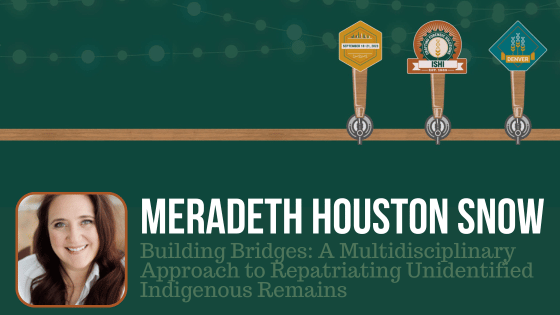The intersection between identifying human remains that may be of Native American ancestry, and genetic testing, is one that is fraught with misunderstandings and cultural insensitivities. As the numbers of missing and murdered Indigenous persons (MMIP) continues to rise, the ability to bridge the world of forensic identification and cultural respect is becoming one that is necessary to form. In 2016 alone, there were 5,712 Native American women and girls reported missing, however, this number is undoubtedly underreported. And yet, in Montana, when human skeletal remains are located that are estimated to be of Native ancestry, they are often sequestered, and additional testing is not completed for genetic identification. Why? The cultural values and understanding of some of the tribes in Montana, and across the United States, view DNA and destructive analyses of human remains to be deeply disrespectful to the dead. Additionally, due to unethical practices that range from the colonial history of the United States to recent questionable work by researchers, there is a deep mistrust in the donation of DNA to large databases and anyone outside of tribal entities. The combination of lack of testing and very few genetic comparisons make carrying out any genetic work difficult, even though the benefits of identifying unknown remains utilizing techniques such as forensic investigative genetic genealogy are plentiful.
In her presentation at ISHI 34 this year, Meradeth will describe the issue of unidentified Indigenous peoples in the United States, particularly in Montana, and how individuals at the University of Montana are working with local and distant tribes and other institutions to address concerns and facilitate education on all sides of the matter. Her presentation also reviews the limitations of current DNA technologies used for unidentified human remains (UHR) identifications and the challenges to consider when applying advanced DNA technologies to this type of investigation.
What is one key learning that attendees will be able to take back to the lab and implement based on your presentation?
Attendees will be better versed in the intricacies of working with sovereign Native American tribal nations, and how to proceed with aiding in identification of individuals from these populations.
Do you think anything in your presentation will surprise the audience? If so, can you give us a teaser?
Building trust and being able to listen and toward a common goal are key—but I don’t think that’s really a surprise 😊.
Who in the audience will benefit most from your presentation? If someone was interested in learning more about your topic, do you have recommendations for resources?
I think everyone can benefit from learning more about the Native American tribes that are found across North America, as well what tools are available for the ongoing silent epidemics that they are facing—namely, the Missing and Murdered Indigenous Women and People that is affecting so many. There are many MMIW/P groups that I would recommend connecting with on a more local level to see how best to help.
What inspired you to seek out a career in the forensic field?
I came to this field, in part, from the ancient DNA world, where I was often working with DNA from the strangest of sources that was hundreds to thousands of years old. Moving to Montana and working on the forensic anthropology cases that came through our lab exposed me to so many sad and frustrating stories of young people, mostly women, who had vanished. I wanted to help with the skillset I had: infinitesimally small starting concentrations, highly degraded DNA, and oseous materials, which has turned out to be the perfect fit.
If you could go back in time, what advice would you give to your younger self as you were starting out?
Don’t forget to breathe a little more! I think we get caught up in our work a lot—it’s important stuff that we do! But, that means I have often had to remind myself a whole lot to take time to step away. It’s important for being a good scientist and researcher, but also a healthy human 😊.
If you had to pick one thing, what do you enjoy most about your job?
Working with students. I have a host of graduate students I work with and they inspire me to no end!
If you currently work in the lab, or have in the past, what’s the weirdest thing you’ve ever collected DNA from?
Oh, I have a long list of weird stuff! It’s pretty much my specialty. Probably the one that cracks me up the most is the 2000-year-old poop from a dry cave site.
If you’ve attended ISHI in the past, what do you most enjoy about coming to the conference?
I have had the pleasure of attending once before and it was amazing! I learned so much from the talks and from chatting with people. If you’re a new attendee, don’t worry too much about chatting with people you don’t know yet. I’m pretty introverted, so this is always a struggle, but I am confident that 99% of people will welcome it!
What is one item on your bucket list? Have you checked if off yet?
I teach Human Evolution on top of my forensic work and really want to go to South Africa and the Cradle of Mankind sites there. I’d like to see them in person and look for fossils. The other biggie is seeing Chauvet Cave, too! Neither have happened, but someday!
What’s one thing that others may not know about you?
I’m a novelist on the side. Nothing related to the field, as I need an escape from that world sometimes, but it is something I very much enjoy 😊.
WOULD YOU LIKE TO SEE MORE ARTICLES LIKE THIS? SUBSCRIBE TO THE ISHI BLOG BELOW!
SUBSCRIBE NOW!


